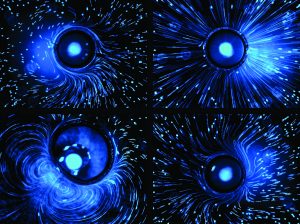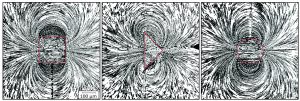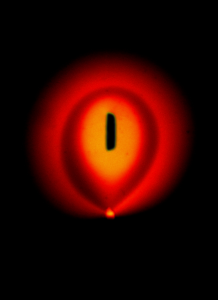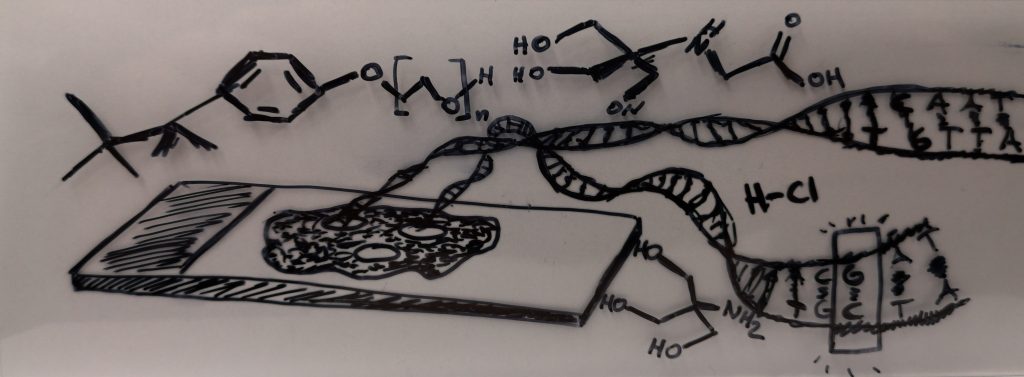Dipole music: Stop, play, record
Experimental visualization of electroosmotic flow (EOF) dipole streamlines generated by different gate electrode geometries in a microfluidic chamber. The gate electrodes consist of a conductive layer insulated from the electrolyte in the chamber by a thin dielectric. The modulation of the potential on the gate electrodes in-sync with the electric field inside the chamber results in net EOF on top of the electrode. The superposition of streamlines generated by different gate electrodes could be used as flow patterning method, which allows fluid manipulation without use of any physical walls. (by Federico Paratore & Vesna Bacheva)
Virtual Channels
Transition between flow patterns in a microfluidic flow cell with an array of apertures for the dynamic reconfiguration of flow trajectories. By injection an aspiration of buffer liquid from an 4×4 array of apertures, the flow of miscible processing liquids can be confined to so-called “virtual channels”. These virtual channels can be formed and reconfigured within less than 20s.
The photograph shows the flow of two different liquids (transparent and red) in several virtual channels (height 0.1mm, width about 2mm), confined by the flow of a blue buffer liquid. (by David Taylor)
Dragging DNA out of tissues
A method for spatially resolved genetic analysis of FFPE cell block and tissue sections is presented. This involves local sampling with hydrodynamic flow confinement of a lysis buffer, electrokinetic purification of nucleic acids from the lysate, and detection of single point mutations through amplification and sequencing (by Lorenzo Petrini)





